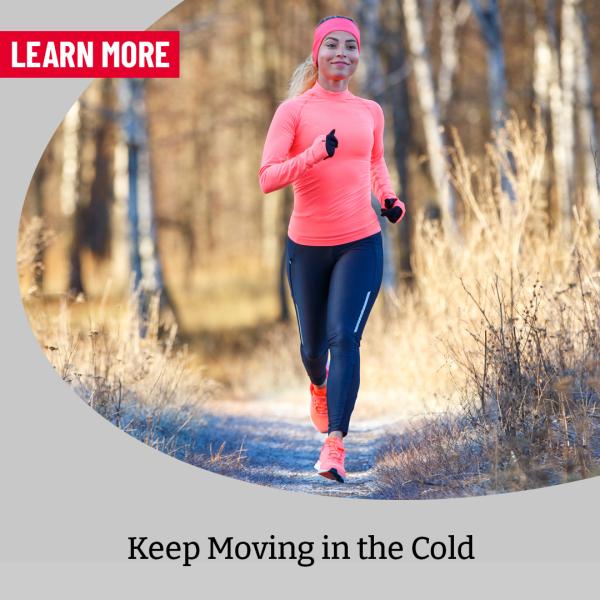
Reviewed and contributions made by Patrick Roscoe, MS, LAT, ATC; Zac Roberts, LAT, ATC; and Zach Zinzer, LAT, ATC.
Just because its winter does not mean you have to stay cooped up inside. Whether you are an athlete, an outdoor lover, or need a cure for cabin fever, the Sports Medicine Team at ATI Physical Therapy has some simple tips to keep you active and safe in the winter months.
Get Your Free Physical Therapy Screening
Not sure where to start with physical therapy? Get a free screening and let us help you start the path to recovery today.
Get My Complimentary Screening
Working Out in the Cold
Whether you are working inside or out, in hot or cold weather, athletes are always encouraged to perform a proper warm-up before their workout. Especially in cold weather where muscles are more likely to contract, a warm-up will help prevent cramping, pain and injury. Likewise, staying hydrated is just as important during the winter months as in summer. Be sure to drink water before, after and (potentially) during the activity.
Winter Workout Tips
Dress in layers: Dressing too warmly can be a mistake. Exercise generates heat, making you feel warmer than it is, and once sweat begins to dry, you can become chilled. That is why it is important to dress in fabrics that wick moisture away from your skin - this will keep you warm and dry. Plus, wearing layers will allow you to remove clothing and put it back on as needed.
Protect your hands, face and ears: When its cold, blood flow is concentrated on your body's core. This leaves other areas of your body vulnerable to frostbite, especially if these areas are left uncovered. Be sure to wear gloves, a hat, or a ski mask of some kind to protect your skin from frostbite.
Get the right shoes AND socks: Be sure to choose shoes that provide traction for slippery surfaces. Likewise, it is equally important to wear the right kind of socks. Avoid cotton, which absorbs moisture. Instead, opt for socks designed for winter workouts. Most manufacturers combine merino wool and synthetic materials like polyester. The merino wool regulates temperature, and the synthetic materials provide structure and longevity.
Be seen: As the cold weather months approach, the amount of daylight dwindles. Avoid black or entirely dark-colored outfits. Rather dress in brightly colored clothing that has reflective properties. Reflective tape or flashing lights are also a great way to get motorists' attention.
Pay attention to weather conditions: Outside activity when it's cold and wet can make you more vulnerable to the temperature. If you get wet, you may not be able to keep your core body temperature high enough, and layering won't help if your clothes are soaked. If it's extremely cold with precipitation or wind chills are extreme, consider taking a break.
Physical Therapy Can Help Improve Your Fitness
Cold weather effects, such as ice and snow, can injure even the most experienced outdoor athlete. If you are dealing with a strain, sprain, ache or pain, schedule a complimentary injury screening with us. Our licensed physical therapists and athletic trainers will evaluate you and provide recommendations on how you can get back to your best. Schedule your appointment today to get started.
